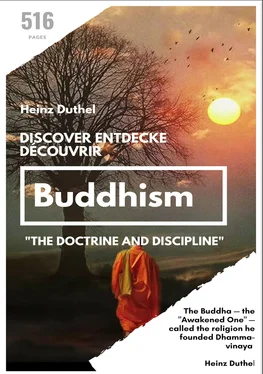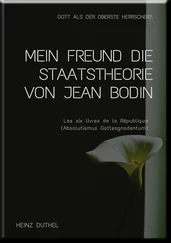The first is the case of Angulimala, a serial killer who lived in the forests of Kosala outside the capital Savatthi. Angulimala repeatedly attacked travelers, killed them, and cut off their fingers, which he wove into a necklace that he wore around his neck. He had killed hundreds of people and was feared throughout the kingdom. He was "wanted dead or alive," but no one had the courage to pursue him. The Buddha saw, however, with his supernormal vision, that Angulimala had another side to his character: as terrible as he was, he had the hidden potential to become an arahant, a saint. Thus one day, all alone, he headed out for the forest where Angulimala was dwelling.
When Angulimala saw him he thought, "Ah, now I will kill this ascetic and cut off his finger for my necklace." He started to run after him with his knife poised in the air. But no matter how fast he ran he could not reach him. For the Buddha, while walking along slowly, had performed a feat of psychic power such that Angulimala, running with all his might, could not catch up with him. Angulimala ran and ran but could not gain an inch. He then called out, "Stop, ascetic, stop!" The Buddha replied, "I have stopped, Angulimala, you stop too."
This statement had a deep impact on the criminal, an impact which struck down to the depths of his heart. He realized that the ascetic before him was the famous teacher, the Enlightened One, and he knew the Buddha had come to him out of compassion, to save him from his terrible deeds. He threw away his knife, bowed down at the Master's feet, and asked to be accepted as a monk. The Buddha admitted him into the order and after a short time Angulimala became an arahant, perfectly wise and deeply compassionate.
The second story concerns the woman Kisagotami. She was a poor woman who had married into a wealthy family, but she did not bear children and was thus scorned by her in-laws. This made her very miserable. But after some time she conceived and gave birth to a son, who became for her the source of boundless joy. Now that she had brought forth an heir to their wealth, everyone else in her husband's family too accepted her. But a few months after his birth the child died, and Kisagotami became distraught. She refused to believe the boy was dead, but convinced herself he was only ill. Thus she went around everywhere asking people to give her medicine for her son.
The townsfolk ridiculed her and abused her, calling her a mad woman, until she finally came into the presence of the Buddha. When she asked him for medicine, he did not give her an eloquent sermon on impermanence. He told her that he could indeed make some medicine for her son, but first she would have to bring him one ingredient: mustard seeds from a home where no one had ever died. Quite optimistic, she went from house to house, asking for mustard seeds. At each door people readily gave her seeds, but when she asked the donor whether anyone in that home had ever died, she was told, "Here a father has died, here a mother, here a wife, here a husband, a brother, a sister," and so on.
She thus came to see that death is the universal fate of all living beings, not a unique calamity that befell her own son. So she returned to the Buddha, aware now of the universal law of impermanence. When the Master saw her coming he asked her, "Did you bring the mustard seeds, Gotami?" And she replied: "Done, sir, is this business of the mustard seeds. Grant me a refuge." The Buddha had her ordained as a nun, and after some time she realized the highest goal and became one of the most eminent nuns in the Bhikkhuni Sangha or Order of Nuns.
To sum up, the Buddha's mission was to establish a path to spiritual perfection, to full enlightenment and Nibbana, liberation from suffering. He did this by propounding a teaching that acknowledged our capacity for attaining spiritual perfection yet which also remained fully respectful of the intelligence and autonomy of human beings. His approach was psychological in orientation, non-dogmatic, pragmatic, and open to investigation. He emphasized self-effort, moral rectitude, and personal responsibility, and he proclaimed his message universally, holding that the potential for spiritual growth and even for the highest enlightenment was accessible to anyone who makes the appropriate effort. It is these factors that give to the ancient teaching of the Buddha such a distinctly modern flavor, making it so relevant to us in these times of shifting ideas and changing values.
The Path to Freedom
A Self-guided Tour of the Buddha's Teachings
These pages invite you to explore some of the Buddha's basic teachings as they are presented in the Pali canon. Each page in this section contains a selection of short passages from the suttas (discourses or sermons; see sutta in the Glossary) that introduce or illustrate different aspects of a single topic. If you encounter a particularly meaningful or interesting passage you can, in most cases, read the full text of the sutta from which it came by simply following the link at the end of that passage. Many of the passages are cross-referenced to other pages, allowing you to pursue a theme to whatever depth or breadth you desire.
This is by no means an exhaustive tutorial. A number of the topics introduced here are explored more thoroughly in the Study Guides. The General Index also has many references to additional readings on related topics.
Begin your tour by exploring the Threefold Refuge (The Triple Gem):
1. The Buddha: A sketch of the Buddha's life, based on excerpts from the suttas.
2. The Dhamma: An outline of the Buddha's teachings, organized according to his method of "gradual instruction" (anupubbi-katha). The Buddha frequently used this framework to guide his students from first principles through progressively more advanced teachings, all the way to the fulfillment of the Four Noble Truths and the realization of Nibbana.
3. The Sangha: Descriptions of the Sangha — the community of persons who have gained at least some degree of Awakening (ariya-sangha) and the community of ordained monks and nuns (bhikkhu-sangha and bhikkhuni-sangha).
The Nobility of the Truths
by
Bhikkhu Bodhi
The most common and widely known formulation of the Buddha's teaching is that which the Buddha himself announced in the First Sermon at Benares, the formula of the Four Noble Truths. The Buddha declares that these truths convey in a nutshell all the essential information that we need to set out on the path to liberation. He says that just as the elephant's footprint, by reason of its great size, contains the footprints of all other animals, so the Four Noble Truths, by reason of their comprehensiveness, contain within themselves all wholesome and beneficial teachings. However, while many expositors of Buddhism have devoted attention to explaining the actual content of the four truths, only rarely is any consideration given to the reason why they are designated noble truths. Yet it is just this descriptive word "noble" that reveals to us why the Buddha chose to cast his teaching into this specific format, and it is this same term that allows us to experience, even from afar, the unique flavor that pervades the entire doctrine and discipline of the Enlightened One.
The word "noble," or ariya, is used by the Buddha to designate a particular type of person, the type of person which it is the aim of his teaching to create. In the discourses the Buddha classifies human beings into two broad categories. On one side there are the puthujjanas, the worldlings, those belonging to the multitude, whose eyes are still covered with the dust of defilements and delusion. On the other side there are the ariyans, the noble ones, the spiritual elite, who obtain this status not from birth, social station or ecclesiastical authority but from their inward nobility of character.
Читать дальше












